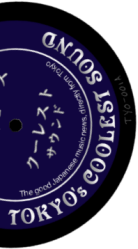Blog - Aspect ratio hell

 Aspect ratio hell
Aspect ratio hell
Lately, I've been digitizing video from TV occasionally, and yesterday I got to wondering about what video resolution is optimal for video capture from TV. I had been recording randomly to DVD-suitable 720x480 MPEG-2, without real plans to put the recorded stuff on DVD in the end, but even afterwards converting them to a more compressed format such as DivX.
My main concern that sent me searching was whether this resolution was dropping lines from the TV signal, but I ended up learning about a much more serious problem: a TV's "pixels" are rectangle, while a computer's are square. This means that a 4:3 ratio TV capture at 720x480 (pixel ratio of 4:2.6̄) will look stretched horizontally when displayed on a computer.
Without going any further, I'm directing you to this very detailed article:
Choosing the Optimal Video Resolution
In summary, only if your final and only output is to be DVD it's good to use 720x480, otherwise always use 640x480 or other 4:3 ratio resolutions.
Posted on January 9, 2006 at 12:26 | Tweet
|
Trackback
Comments RSS
Yes, some comittee (CCIR ?) decided in the 1990s to use non-square pixels as a standard for digital stored NTSC video. To make things even more annoying some of the first high end gear was 720x486. Fortunately they literally got rid of the extra 6 pixels with DV.
The vertical is by far the more dangerous of the dimensions because it's resolution can't be changed. That's one of the reasons why PAL conversion is a pain, they use 720x534. (still in 4:3 ratio) That's what my live Tomoe videos wound up on. After you take into account 25 images per second, the image is interlaced so it can't just be scaled.
In my opinion, unless you are finding yourself needing to upload video files to the net. Y I'd think the the effort to deal with Divx, XVID, etc. seems a bit of a time waster given the cheap cost of DVDs.
There are probably more options to play an MPEG-2 as is than there are to play a higher compressed web format- for instance my set-top player can play them fine just thrown onto a data DVD, my PC software DVD player can play them with a double click too (no aspect ratio issue either).
Posted by ndkent on January 10, 2006 at 16:59
I agree with your points. As I said, I think it sums up to what you want to do with it, if your intention is to put it on DVD, then MPEG-2 720x480 is the only way to go.
I think DivX serves well as the "MP3" of video. Relatively good quality for the place it takes, and it's easy to share online.
Posted by Patrick on January 10, 2006 at 20:41
australia's aspect ratio went from 4x3 to 16x9 for digital or widescreen or whatever reason...i was away the day we had the talk. i think where i work, metro tv station, for some other reason, we decided to go 14x9. and we are always having problems from other stations sending us feeds about who has to arc the vision. there is no easy solution. so why didn't we all sit down and agree on a standard?
Posted by andrew ffrench on January 22, 2006 at 19:28
Interesting. You'd think someone would learn something from all the [non-]standard mistakes done in the past...
Posted by Patrick on January 23, 2006 at 16:15
For what it's worth 14:9 is, as I understand it the BBC's compromise idea - right inbetween 12:9 (=4:3) and 16:9 which is the widescreen video standard for everyone else. I think the hoped was you could squeak by with an inbetween.
For what it's worth the U.S. is being regulated into 16:9 in a couple years, but I can already see stations either lazy of wanting to get viewers used to playing material all skinny or chubby. I saw some anime on MTV2 and was joking with my friends that it takes place in a world where cars have egg-shaped wheels and everyone is tall and slim.
But of course Patrick's original issue had more to do with digital media containing non-square pixels as standard
Posted by ndkent on January 25, 2006 at 11:25



